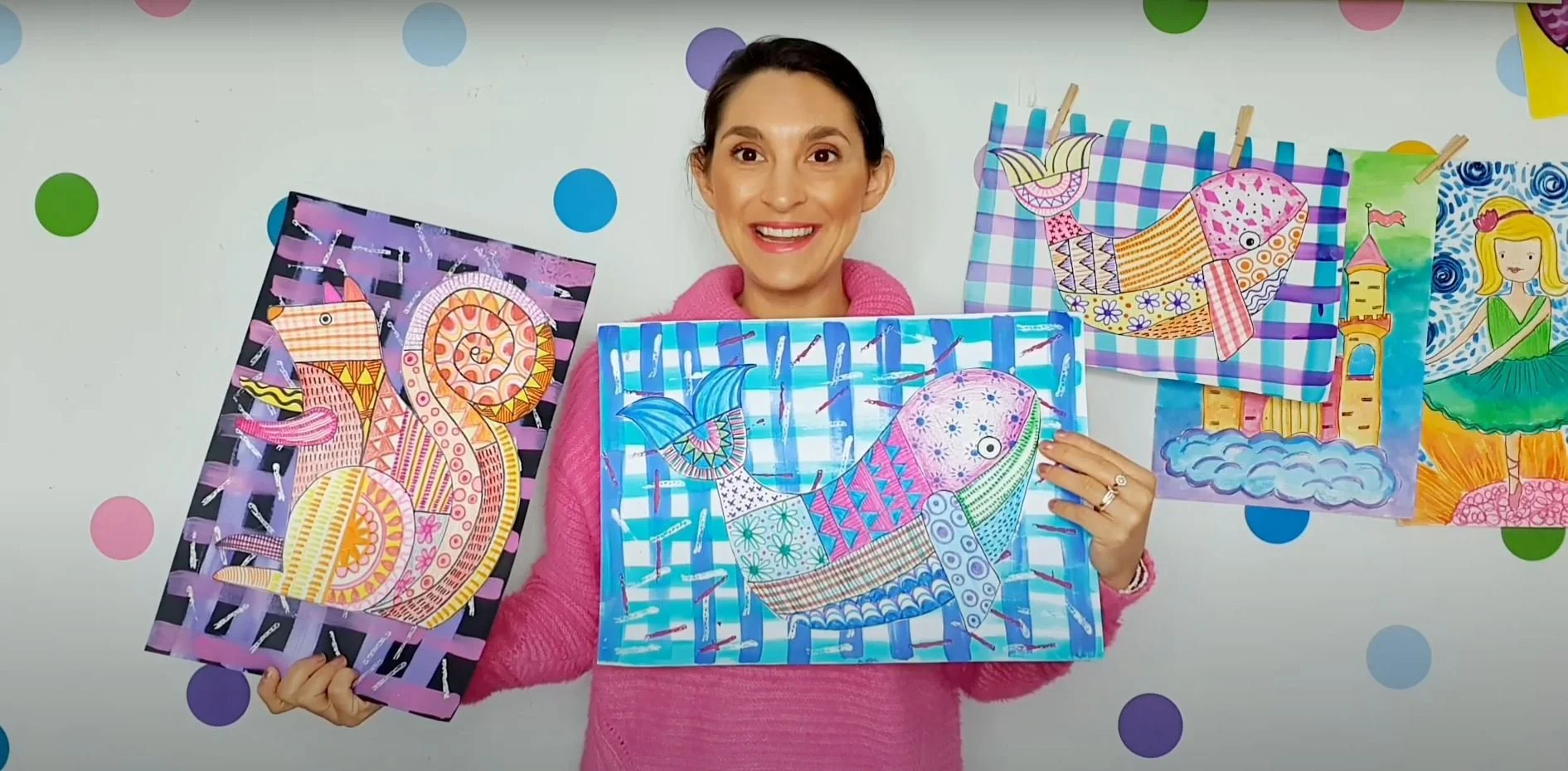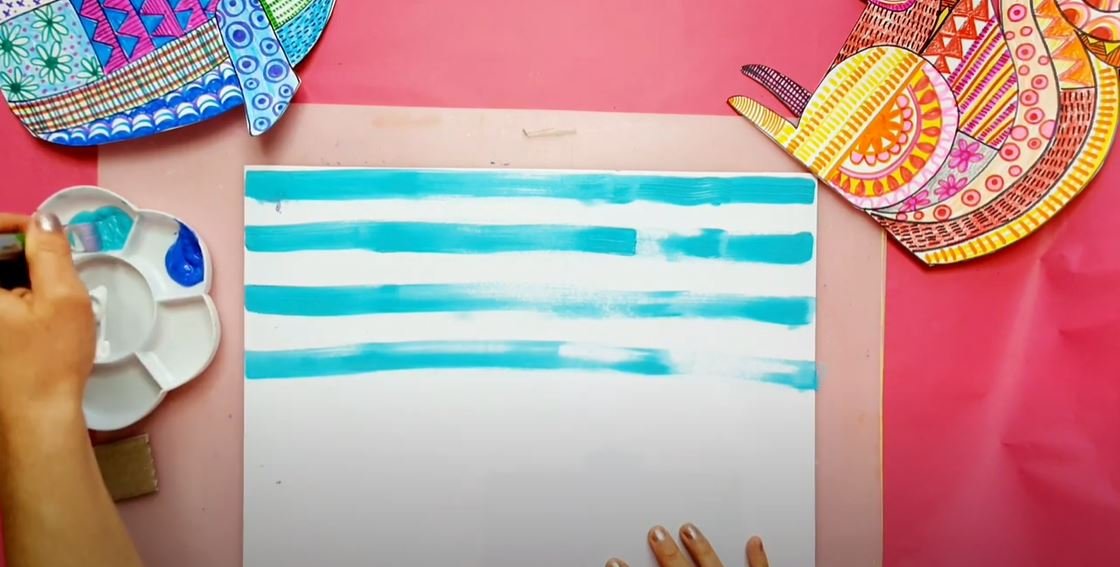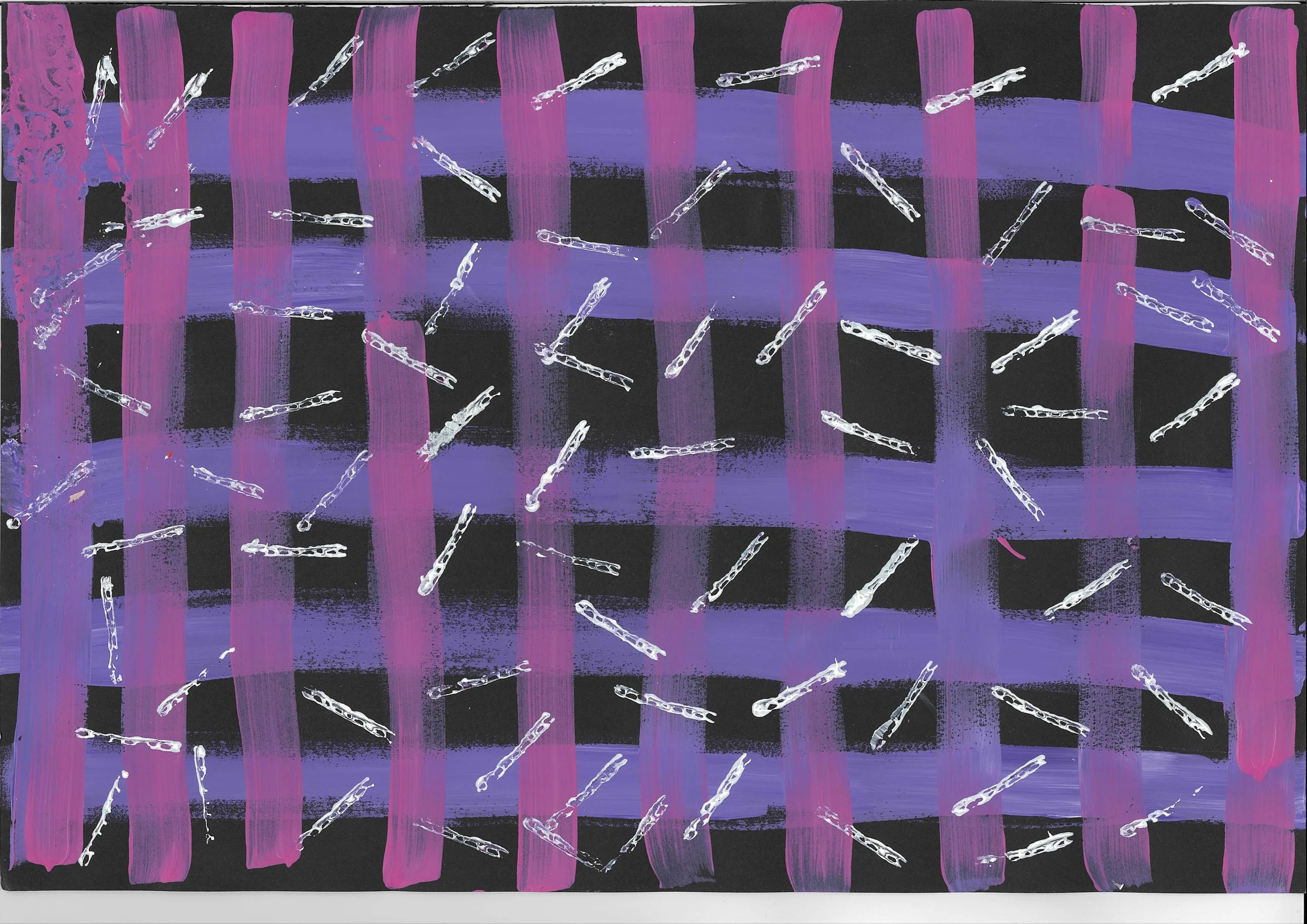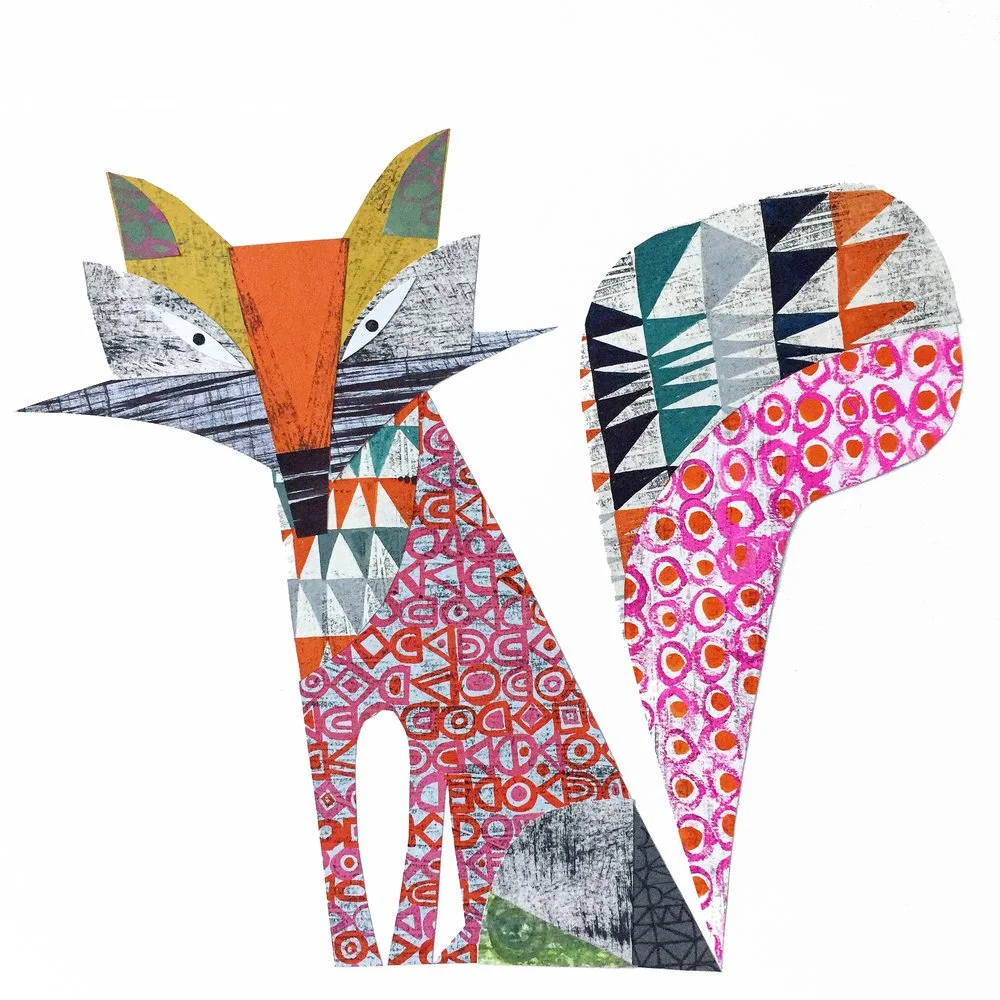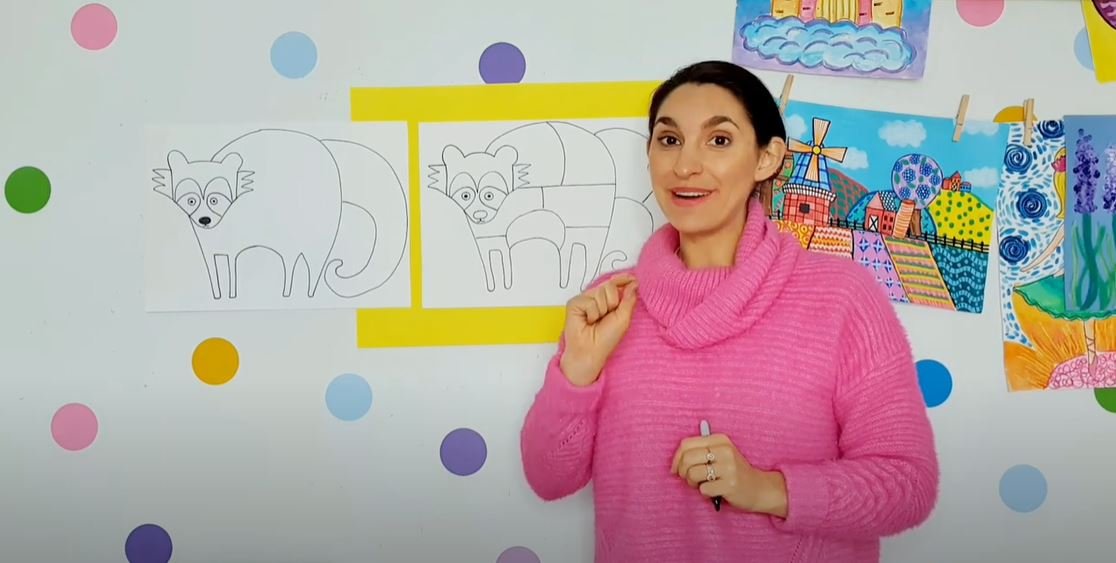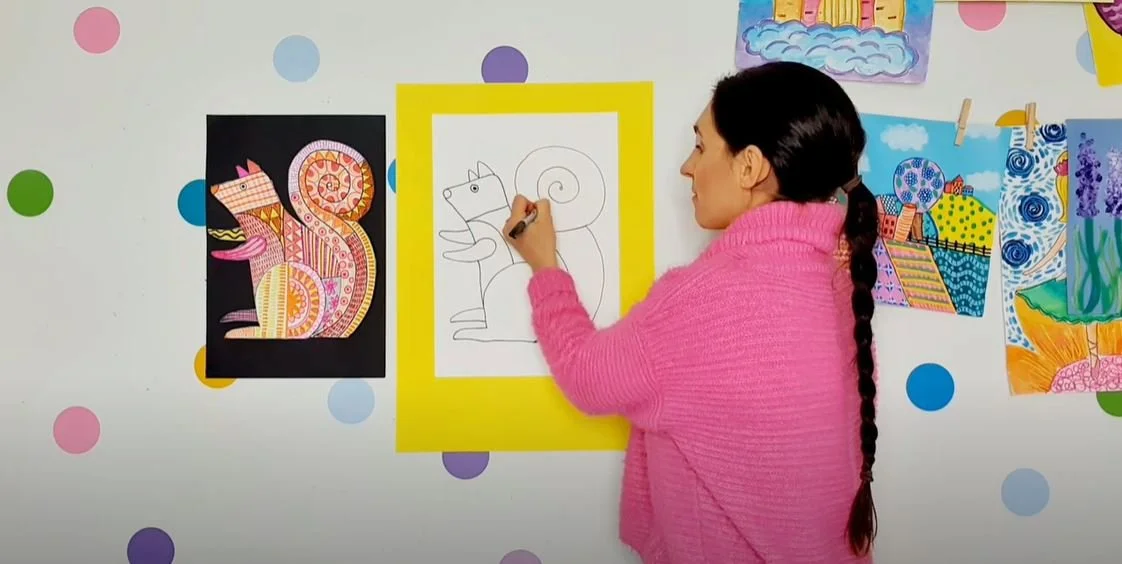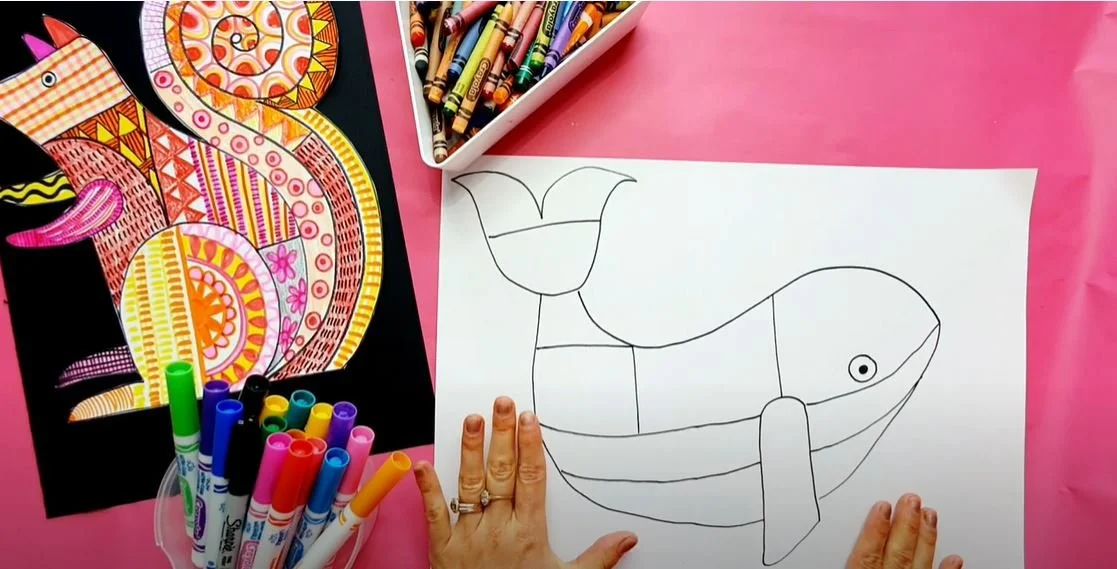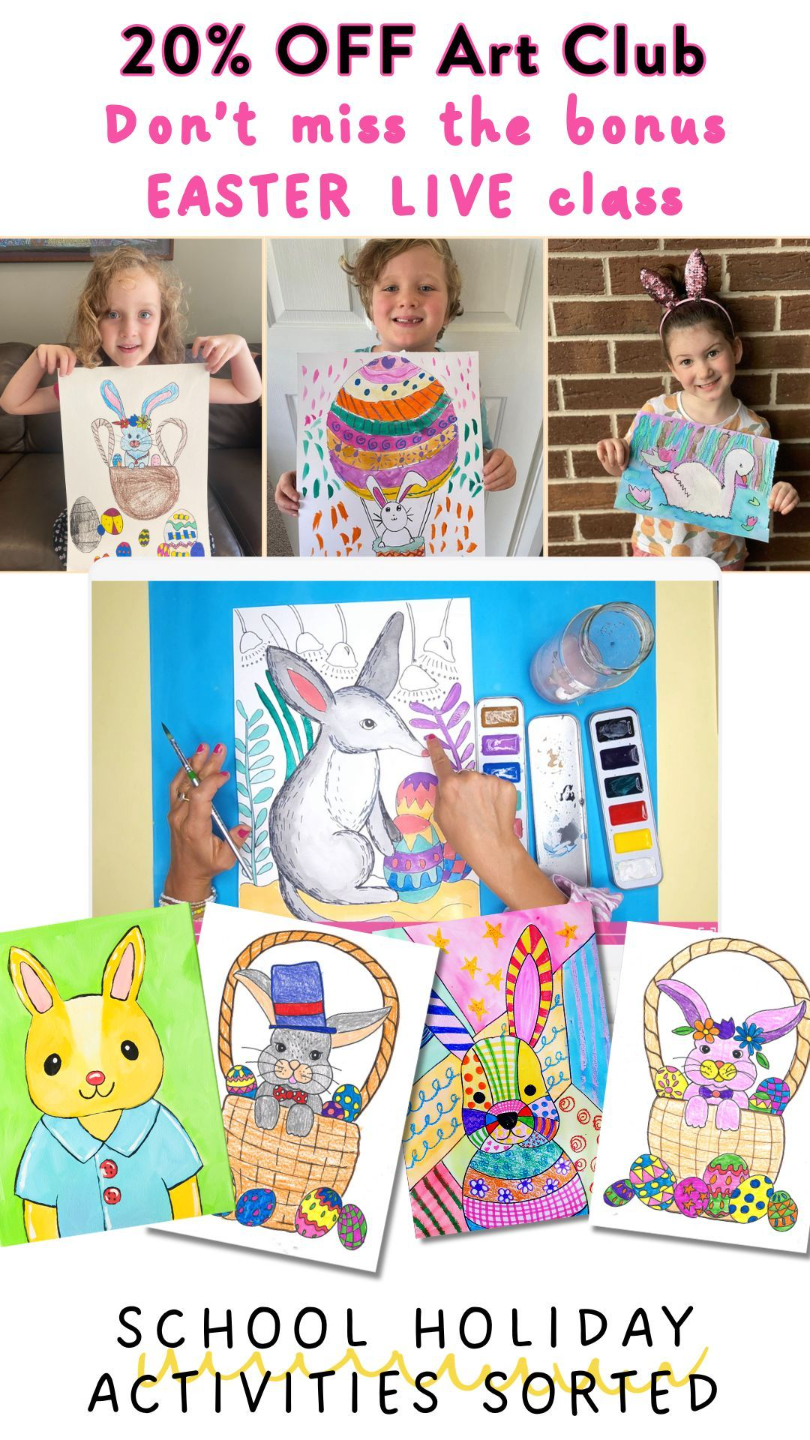
Clare Youngs Patterned Animals Art for Kids
Oct 22, 2022
Last year I introduced my students to an incredible UK artist; Clare Youngs - and I’ll be doing again and again and again! Her combination of simple animal outlines and playful patterns are a perfect project for Little Artists to be introduced to painting, printing and pattern making. Clare Youngs creates all her patterns using printing techniques on paper (she has a great tutorial here). In this lesson we used this process to create a patterned background , then used less-messy markers and crayons to fill our animal with pattern. The results were stunning, and children were engaged from beginning to end with this multi-media project.
Follow the steps below to create this at home. You can also download my Pattern Animal Drawing Printable to give you a head start on drawing a Whale, Raccoon and Squirrel.
Art Supplies:
-
Pattern Animal Drawing Printable
-
A3 Art Paper x 2
-
Acrylic Paint or Watercolour
-
Medium Flat Brush
-
Sharpie Marker
-
Coloured Markers & Crayons
-
Scissors & Glue Stick
Step 1.
It’s a great idea to create the background first so it had time to dry. We used A3 Art paper of any colour for a background and created patterns with acrylic paint. Clare Youngs has a great blog post about mark making with found objects; there are no-rules with these patterned backgrounds!
We used acrylic or watercolour paint and a wide flat brush for a checked stipe base. Then dipped little pieces of cut cardboard into acrylic paint and printed them over the top. Some students painted wiggly lines and details too.
Step 2.
I always like providing my students with examples of the artwork for our Artist study. Clare Youngs uses very simple shapes for her animals. In our lesson the student’s followed me along to draw a whale, raccoon and a squirrel. Then they chose the outlines they wanted to continue with. The whale was the easiest animal drawing and is best for younger kids. You can download my Patterned Animal Printable to get you started below.
Step 3.
Divide your animal outline into at least 6 sections with a sharpie marker. And then the fun will colour begins! Fill each section with a different pattern using markers and crayons. Squiggly lines, triangles, swirls, stripes, hatching, polka dots, zig zags, stars! I always chat throughout this pattern process with my students and ask them to volunteer pattern ideas and colours. In this example we selected either “warm” or “cool” colour schemes for our patterns.
PATTERN INSPIRATION
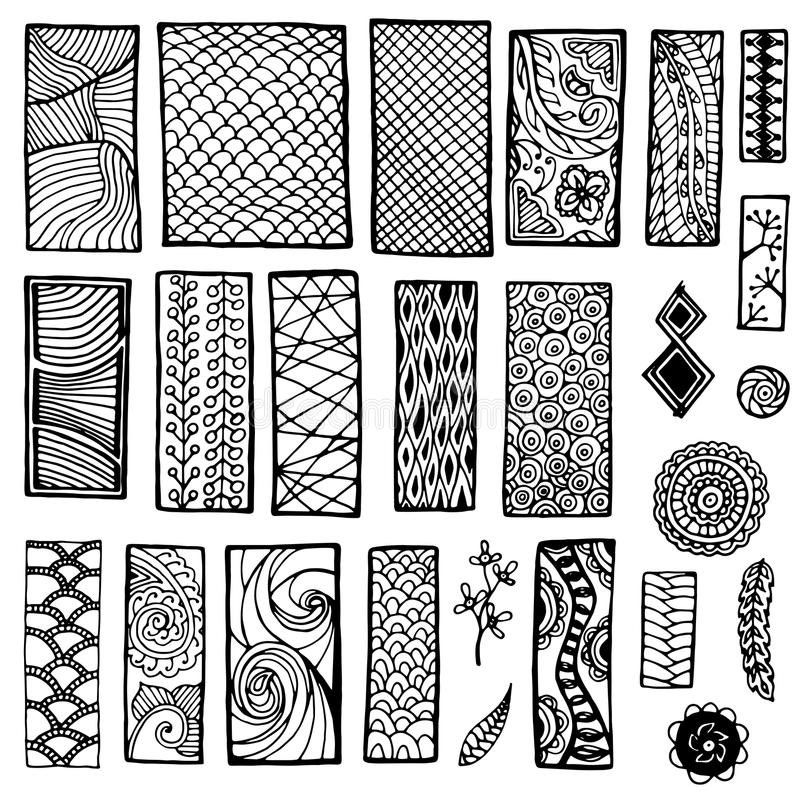
Step 4.
Once your animal is covered in patterned it’s time to cut it out and glue it onto your painted background. The beautiful, colourful, crazy patterned results from my students blew me away! Each drawing looked completely unique to every Artist and it turned out to be a huge crowd favourite in my Online Art Club!
With three drawing options; whale, racoon and squirrel, and unlimited pattern and background options; this is a great lesson to revisit again and again. You can find the full length video lesson inside my Online Art Club for kids; click below to find out more.
